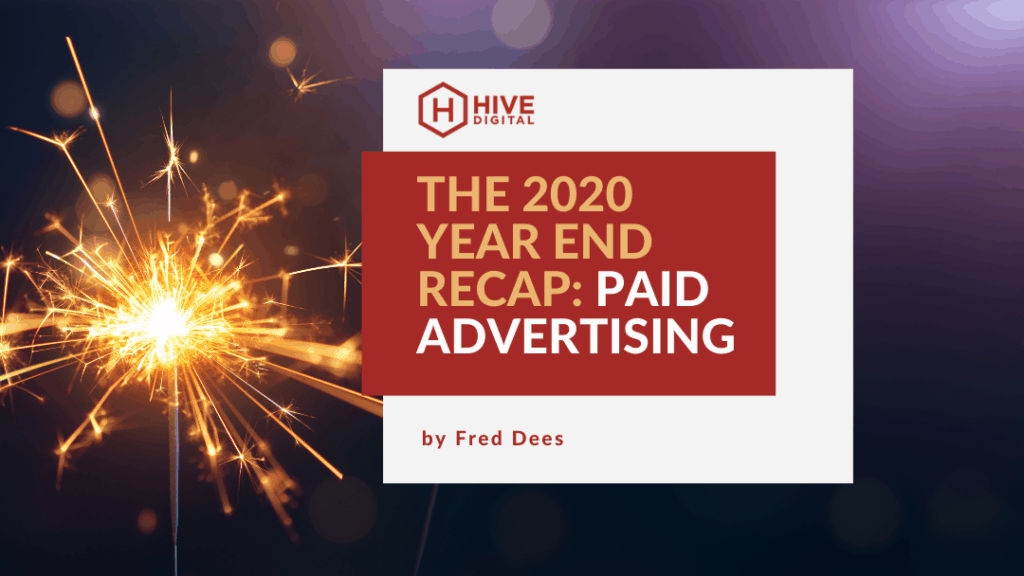2020… Well, what a year?! It feels like I just finished a blind date that has made me want to drive off into a sunset and disappear forever. Thanks 2020 for all the memories!
Jokes aside, this was a big year in paid search. We had Google pulling magic tricks, hiding long-time used ad types right in front of our eyes and emailing policy violations at a wild rate to agencies and clients **insert facepalm**. Audiences were merged, Discovery became a mainstay, and search query data disappeared. Oh, and there were lingering effects from the pandemic that hit every digital advertising account differently.
To say that I’m ready to turn the page to the new year is an understatement. But before we close this chapter and start a new one, let’s do a quick recap on the year that was 2020.
TEXT AD CREATION HIDDEN
You know something that always frustrates me? When I go to get my keys and they’re not where I left them. Google essentially hid my keys when they removed text ad creation from the first set of options creating ads. Now did this ruin my day, when I first noticed the blue box with a treasure hunt-like set of instructions on how to create text ads?? No it didn’t. But it was a surprise.
EXPANSION & ENFORCEMENT OF POLICY VIOLATIONS
From housing to abortion to relationships, a rise in policy violations took place during the summer of 2020. A lot of these violations came as surprises since most campaigns had been live for some time before getting disapproved ads emails. Between emails from Google and the subsequent emails from clients w/ questions, these new violations provided additional frustration to 2020.
Read more info from our friends at SEJ
CUSTOM AUDIENCES
Once upon a time advertisers using Google Ads could create Custom Affinity Audiences and Custom Intent Audiences. Then one day, they were gone. Google combined the two custom audiences into one: Custom Audiences. **great name** It seems a simpler process but also feels like we lost some of the ability to use creativity when building audiences to target.Read more from our friends at Search Engine Land
DISCOVERY CAMPAIGNS
Though tested by Google in 2019, Discovery Campaigns became a fixture in the Ads platform in 2020. These campaigns run across YouTube, Gmail, Google Discover, and the content feed on Google’s homepage. This campaign type allows paid marketers to tap into millions of additional users and has similarities to the reach of social media.
SEARCH TERM DATA
Google giveth, and Google taketh away. Data and insights drive everything we do as digital marketers, and anytime that is reduced or taken away it has a negative impact. Search query data has been one of the more vital parts to paid strategy, as advertisers have used those search queries to generate relevant ads to targeted audiences, and ultimately, efficiency throughout the account. Now we have less transparency and control over the campaigns. In the name of privacy, Google has limited the power of advertisers. Google giveth, and Google taketh away.
COVID
The most obvious event this year has to be the one that impacted every person on the planet. The pandemic threw curveball after curveball to every advertiser and business this year.
Some businesses were impacted negatively, and some positively. We would see a hot sauce client sell more bottles of hot sauce than they have over 10 years in business. Landscaping clients turning away leads. We saw other clients watch their customer base dry up and have to pause all digital advertising efforts. We saw other clients close their doors for good.
CPCs changed drastically sometimes, depending on rises and falls in search volume. Google Support became slower after the company decided to keep all employees working from home and hampering the process of resolving issues in the platform. And Google decided to give free ad credits to accounts that stayed active, helping keep accounts live when lots of business owners wanted to pause everything.
SUMMARY
2020 proved to be a wild year all around, and paid search wasn’t exempt. Moving into the new year we expect to see automation and machine learning play bigger and bigger roles as Google continues to remove transparency and force advertisers to learn how to leverage the automated capabilities the platform wields.










